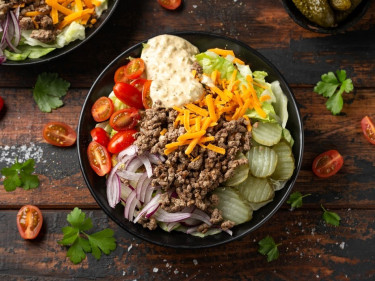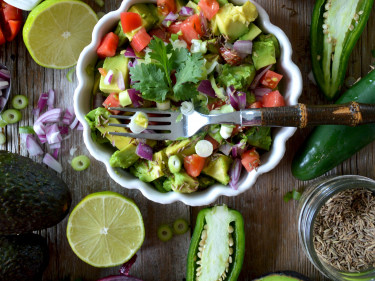September 29 is World Heart Day! A day that is all about spreading awareness of heart health and how we can support ourselves, our loved ones and our broader communities towards better heart health.
Cardiovascular disease is the number one cause of death for Aussies and around the globe. One of the leading risk factors for cardiovascular disease is an unhealthy diet. This also means that one of the best things you can do for your heart health is to eat healthily. We’ve pumped out some key tips on healthy eating to help you help your heart.
Eat lots of fruit, vegetables and wholegrains
Why?
There’s a lot of good reasons to eat the recommended two serves of fruit and five serves of veggies a day, and one of them is your heart health. Fruit and vegetables are full of a range of vitamins and minerals, plus fibre and phytonutrients, all of which help prevent heart disease. Wholegrain foods are high in fibre, which prevents against heart disease by helping to keep your cholesterol levels in check.
How?
Try to include fruit, vegetables and wholegrains at each (or most) meal and snack time
Fruit and vegetables are great in their many different forms (fresh, canned or frozen), so choose whichever works for you. Just go for canned fruits that are packed in their own juices and canned vegetables that are reduced salt
Make sure most grains and cereals you eat are wholegrain, e.g. wholemeal or wholegrain bread or wraps instead of white, brown rice instead of white rice
Eat a variety of lean meat or alternatives, limiting red meat intake
Why?
High intakes of red and processed meats are linked to higher risk of heart disease, as well as some cancers, while high intakes of fish and plant-based proteins (e.g. legumes) are linked to lower risk of heart disease. One of the main differences is the type of fats in these foods, red and processed meats are higher in saturated fats while fish and plant-based proteins are high in unsaturated fats.
How?
Limit intake of red meat to 1-3 times per week and choose lean and unprocessed red meats (e.g. beef, lamb, kangaroo)
Eat mostly fish and seafood, legumes, nuts and seeds, and some lean poultry and eggs
Choose healthy fats and oils
Why?
The type and amount of fat we eat plays a major role in heart disease risk. Saturated fats (e.g. in processed meats) increase heart disease risk, while unsaturated fats (e.g. in nuts and legumes) decrease risk, mainly due to their impact on cholesterol levels.
How?
Limit red meat and eat mostly fish and seafood, legumes, nuts and seeds instead
Choose foods that are high in unsaturated (healthy) fats e.g. avocado, nuts
Choose oils in cooking that are high in unsaturated fats e.g. olive oil, sunflower oil
If you have heart disease or high cholesterol, reduced fat dairy (milk, yoghurt, cheese and alternatives) is recommended as it also helps reduce total kilojoule intake
Limit salt intake, use herbs and spices instead
Why?
In short, eating too much salt increases the risk of high blood pressure, which leads to heart disease. The recommendation is to consume no more than 5 grams (or one teaspoon) of salt per day, however the average Australian consumes twice this amount.
How?
Don’t add salt to food. Salt is naturally present in foods which gives us the amount our bodies need to function. Adding salt means we get too much which then has a negative effect (i.e. high blood pressure)
Use herbs and spices to add flavour instead
Choose lower salt varieties of foods (e.g. canned vegetables with no added salt, salt reduced sauces). Limiting intake of processed and packaged foods helps as these are the ones where salt is typically added
Have a look at the nutrition information panel on packaged products. Low salt/sodium foods are ones with <120mg per 100g
Check out our recipes for healthy eating ideas and inspiration!













